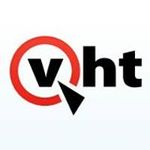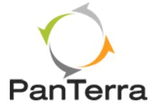Description

Intelligent Call Routing

VHT Callback
Comprehensive Overview: Intelligent Call Routing vs VHT Callback
Intelligent Call Routing
a) Primary Functions and Target Markets:
Primary Functions: Intelligent Call Routing (ICR) is a telecommunication technology that automatically directs incoming calls to the most appropriate agent or department. Its key functions include:
- Skill-Based Routing: Calls are routed based on the skill set required, matching the caller to an agent who can best handle their issue.
- Data-Driven Routing: Utilizes customer data, such as past interactions, to route calls effectively.
- Geographic Routing: Calls are routed based on the caller’s location, which can be beneficial for language preferences or regional expertise.
- Priority Routing: Important customers or VIPs are prioritized in the call queue or directed to specialized agents.
Target Markets: ICR is used predominantly by large-scale customer service centers in sectors like finance, telecommunications, healthcare, and retail. Essentially, any organization with a high volume of customer interactions can benefit from ICR.
b) Market Share and User Base:
ICR is widely adopted across industries that rely on customer service as a critical part of their business strategy. While hard numbers on market share fluctuate, leading providers like Cisco, Genesys, and Avaya are well-recognized players with substantial footprints in the call center solutions market.
c) Key Differentiating Factors:
- Customization: The level of customization in routing protocols differentiates providers, as some offer more advanced and flexible configurations.
- Integration: The ability to integrate with other systems (CRM, ERP) is a critical differentiator, allowing for more seamless operations.
- AI and Analytics: Sophistication in using artificial intelligence and analytics to predictively route calls can set solutions apart.
Virtual Hold Technology (VHT) Callback
a) Primary Functions and Target Markets:
Primary Functions: VHT Callback is a solution designed to improve customer service by offering a callback option instead of waiting on hold. Key functions include:
- Scheduled Callbacks: Customers can choose a convenient time for a callback rather than staying in the queue.
- Queue Callback: Allows customers to retain their position without being on hold. They receive a call when an agent is available.
- Multichannel Support: Callback options can be offered across various channels, including voice, web, and mobile apps.
Target Markets: The VHT Callback is targeted at businesses with high call volumes, long wait times, or significant fluctuations in call traffic. Industries such as retail, telecommunications, utilities, and financial services are likely adopters.
b) Market Share and User Base:
The VHT Callback has been increasingly adopted as businesses focus on improving customer experience and satisfaction. Its market presence is growing, with VHT and other companies like Genesys and CallBack Cloud providing similar solutions. Adoption rates vary, but callback solutions are becoming a standard offering in robust contact centers.
c) Key Differentiating Factors:
- Implementation Simplicity: Solutions that offer easy integration with existing systems and minimal disruption during deployment are at an advantage.
- Scalability: Ability to handle increasing call volumes without degradation in performance is crucial.
- User Experience: Seamlessness in the customer journey, such as intuitive scheduling and fast agent connections, differentiates offerings.
- Cost Efficiency: Pricing models and return on investment play a part in differentiating choices, as businesses often weigh the solution cost against the expected improvement in customer experience.
Comparison Summary:
While both Intelligent Call Routing and VHT Callback aim to optimize customer service delivery, they address different aspects of the customer interaction process. ICR primarily focuses on improving the efficiency of routing calls to the best agents, enhancing operational efficiency. In contrast, VHT Callback centers on improving customer satisfaction by minimizing wait times and providing flexibility. Both solutions are crucial for modern contact centers, and often they are combined to maximize service levels and improve customer experiences.
Contact Info

Year founded :
Not Available
Not Available
Not Available
Not Available
Not Available

Year founded :
Not Available
Not Available
Not Available
Not Available
Not Available
Feature Similarity Breakdown: Intelligent Call Routing, VHT Callback
To provide a feature similarity breakdown for Intelligent Call Routing and VHT Callback (Virtual Hold Technology), let's consider their core functionalities, user interfaces, and unique features. Both systems are designed to enhance call handling efficiency and customer experience but approach these goals from slightly different angles.
a) Core Features in Common
-
Call Management Optimization:
- Intelligent Call Routing and VHT Callback both aim to streamline call management by minimizing wait times and improving the allocation of calls to the most appropriate agents or services.
-
Customer Experience Enhancement:
- Both systems focus heavily on improving the overall customer experience by reducing frustration, whether through efficient routing or offering callbacks to avoid long hold times.
-
Integration Capabilities:
- Both products often integrate with existing customer relationship management (CRM) systems and other contact center technologies, ensuring seamless information flow and context-aware service handling.
-
Analytics and Reporting:
- They provide analytics and reporting features to help organizations understand their call center performance, customer wait times, and routing efficiency, enabling data-driven decision-making.
b) User Interface Comparison
-
Intelligent Call Routing:
- Usually offers a configuration-focused interface, where administrators can set up and manage routing rules based on various parameters like agent skills, customer priority, or business hours.
- UI designs are typically dashboard-centric, providing a real-time look at system performance, call flows, and agent activity.
-
VHT Callback:
- The UI is oriented toward managing the callback process, including scheduling, prioritization, and status tracking.
- It often includes features that allow both agents and customers to manage callback options easily, sometimes extending to mobile interfaces for customer convenience.
c) Unique Features
-
Intelligent Call Routing:
- Skill-Based Routing: Advanced algorithms to route calls based on agent skills and caller needs, improving first-call resolution rates.
- AI and Machine Learning Integration: Some systems employ AI to predict the best routing strategy by learning from past interactions.
-
VHT Callback:
- Dynamic Callback Options: Offers real-time callback options, allowing customers to choose a convenient time for a callback rather than waiting on hold.
- Multi-Channel Callback Requests: Allows customers to request callbacks via different channels, such as web, mobile, or even social media platforms.
- Queue Position Awareness: Provides customers with real-time updates on their position in the callback queue or estimated callback time.
These distinctions highlight that while both systems aim to improve call handling, Intelligent Call Routing focuses more on optimizing the current call flow through efficient allocation and decision-making processes, whereas VHT Callback emphasizes flexibility and convenience, allowing customers control over their interaction timings.
Features

Not Available

Not Available
Best Fit Use Cases: Intelligent Call Routing, VHT Callback
Intelligent Call Routing (ICR) and VHT Callback are powerful tools used to improve customer experience in contact centers. They cater to different needs and can be beneficial for various types of businesses, projects, and industry verticals. Here's a breakdown of the best fit use cases for each:
Intelligent Call Routing (ICR)
a) For what types of businesses or projects is Intelligent Call Routing the best choice?
-
Large-scale Enterprises:
- Organizations with large and complex contact centers benefit substantially from ICR. This includes industries like telecommunications, banks, insurance companies, and utility providers. These enterprises need to efficiently handle high volumes of calls with diverse customer needs.
-
Businesses with Specialized Departments:
- Companies that have multiple specialized departments (e.g., technical support, billing, sales) benefit from ICR as it ensures calls are routed to the most suitable agents or departments, improving resolution rates and customer satisfaction.
-
Organizations with Global Presence:
- Multinational corporations with contact centers across various regions use ICR to route calls based on geographic location, language preferences, and time zones.
-
Projects with Multiple Customer Segments:
- Businesses that segment their customers based on criteria such as VIP status, purchase history, or service level agreements can use ICR to offer prioritized service levels.
VHT Callback
b) In what scenarios would VHT Callback be the preferred option?
-
High Call Volume Periods:
- During peak seasons or events, such as Black Friday for retailers or tax season for financial services, VHT Callback helps manage high call volumes by allowing customers to request a callback rather than wait on hold.
-
Business Hours Limitations:
- For companies that experience significant after-hours call volume, offering a callback option ensures that customers don't face long waiting times and that inquiries are handled during available business hours.
-
Improving Customer Experience:
- Companies aiming to enhance customer satisfaction can use VHT Callback to give customers the convenience of being called back at their preferred time, reducing frustration associated with waiting.
-
Resource Optimization:
- Contact centers with limited staffing can use VHT Callback to better manage their workforce by scheduling callbacks during off-peak hours.
d) How do these products cater to different industry verticals or company sizes?
-
Industry Verticals:
- Healthcare: Both ICR and VHT Callback can be critical in healthcare settings where urgent communication may be needed. ICR can prioritize calls based on urgency, while VHT Callback ensures follow-ups for non-critical issues.
- Retail: During sales or holiday seasons, retail companies can use VHT Callback to manage surges in customer inquiries and ICR to route specific queries (e.g., order issues) to the right department.
- Financial Services: Banks and insurance companies use ICR to direct calls based on client type and service needs, while VHT Callback helps manage peak call times, such as end-of-month billing.
-
Company Sizes:
- Small to Medium-sized Businesses (SMBs): SMBs might prefer VHT Callback due to budget constraints, providing improved customer service with limited resources. As they scale, they could adopt ICR to address increasing complexity in customer interactions.
- Large Enterprises: Often employing both tools, large enterprises benefit from the efficiency and customer satisfaction improvements provided by ICR and VHT Callback, given their typically vast customer base and service offerings.
Each of these solutions addresses specific challenges in customer service management, allowing businesses to not only enhance user experience but also optimize operational efficiency.
Pricing

Pricing Not Available

Pricing Not Available
Metrics History
Metrics History
Comparing undefined across companies
Conclusion & Final Verdict: Intelligent Call Routing vs VHT Callback
To provide a comprehensive conclusion and final verdict on Intelligent Call Routing and VHT Callback, consider the following analysis and comparisons:
a) Best Overall Value
Determining the best overall value between Intelligent Call Routing and VHT Callback depends largely on the specific needs and priorities of a business. However, if we consider value as a combination of efficiency, customer satisfaction, implementation cost, and scalability:
- Intelligent Call Routing typically offers greater value for organizations that prioritize optimal resource utilization and enhanced customer experiences due to its ability to connect customers with the best-suited agents quickly.
- VHT Callback often provides better value for businesses focusing on reducing call abandonment rates, managing high call volumes more effectively, and improving customer satisfaction by allowing callers to avoid waiting on hold.
b) Pros and Cons
Intelligent Call Routing
- Pros:
- Increases first-call resolution by matching callers with the most knowledgeable agents.
- Enhances customer satisfaction through personalized call experiences.
- Optimizes resource allocation and workflow efficiency.
- Cons:
- Can be complex and costly to implement and maintain, especially in large-scale operations.
- Requires in-depth customer data to be truly effective, which may raise privacy concerns.
- May need continuous updates and adjustments to reflect changes in products or services.
VHT Callback
- Pros:
- Reduces on-hold time, enhancing the customer experience and decreasing abandonment rates.
- Simplifies call load management during peak times.
- Often easier and less costly to implement compared to comprehensive routing systems.
- Cons:
- Does not address routing accuracy; calls might still reach less optimal agents.
- May result in delayed problem resolution as customers wait for the callback.
- Effectiveness can be hindered if not properly integrated with existing call systems.
c) Recommendations
-
For Organizations with High Call Complexity:
- Choose Intelligent Call Routing if your business frequently handles complex queries that require specialized agents. This approach ensures that calls are directed efficiently, maximizing the competence and capacity of your team.
-
For Organizations with High Call Volume:
- VHT Callback is recommended if your call volumes are high and customers often face extended wait times. This solution is particularly beneficial when quick connection isn't as critical as ensuring the customer doesn't wait on hold.
-
Hybrid Approach:
- Consider integrating both systems if feasible. While Intelligent Call Routing ensures the right agent handles each call, VHT Callback can address issues with waiting times, optimizing overall customer experience.
Ultimately, the choice between Intelligent Call Routing and VHT Callback should be guided by your organization's customer service goals, technological infrastructure, and budget considerations. Evaluate the specific customer needs and operational dynamics to make an informed decision that aligns with your business strategy.
Add to compare
Add similar companies



